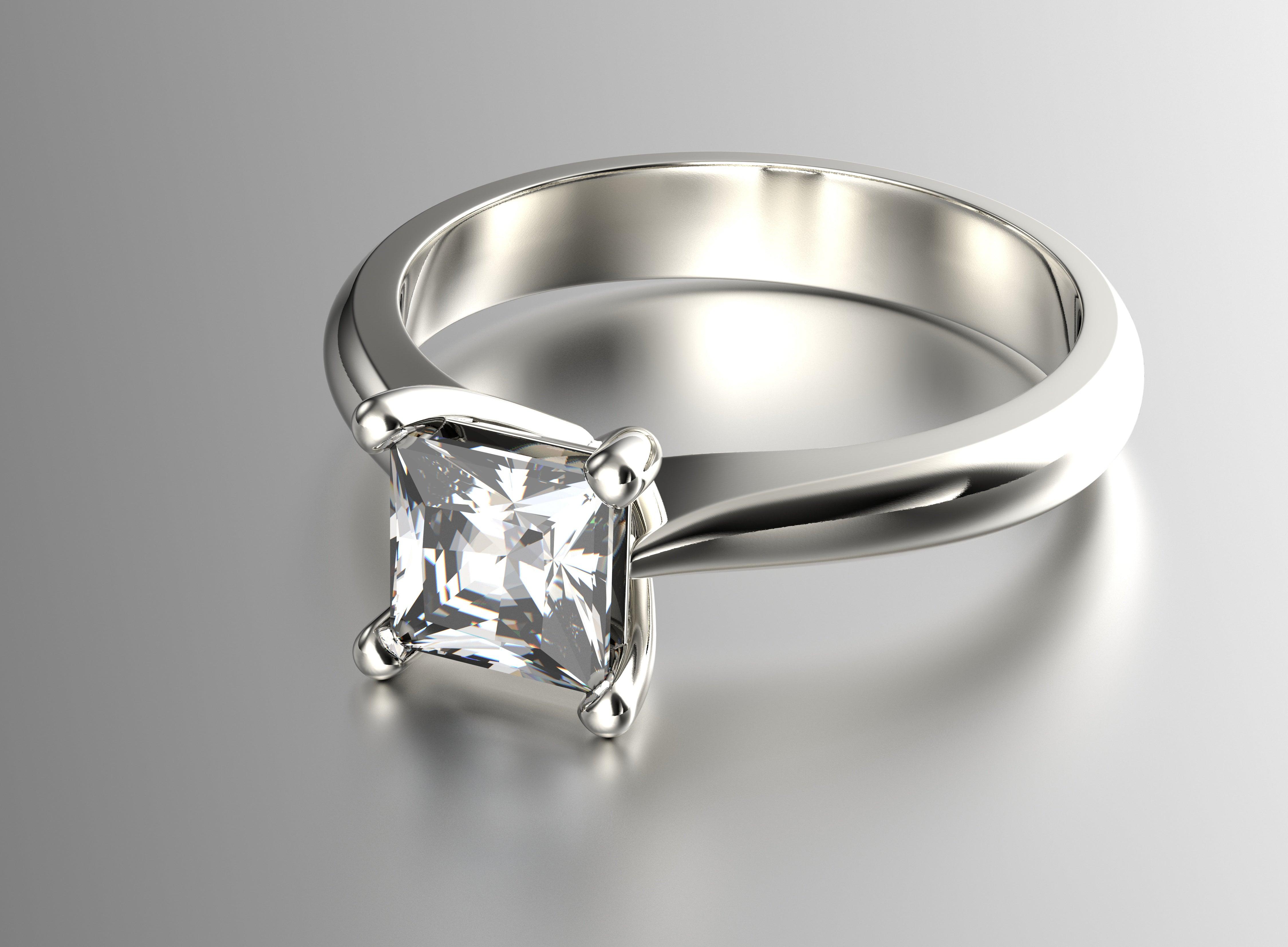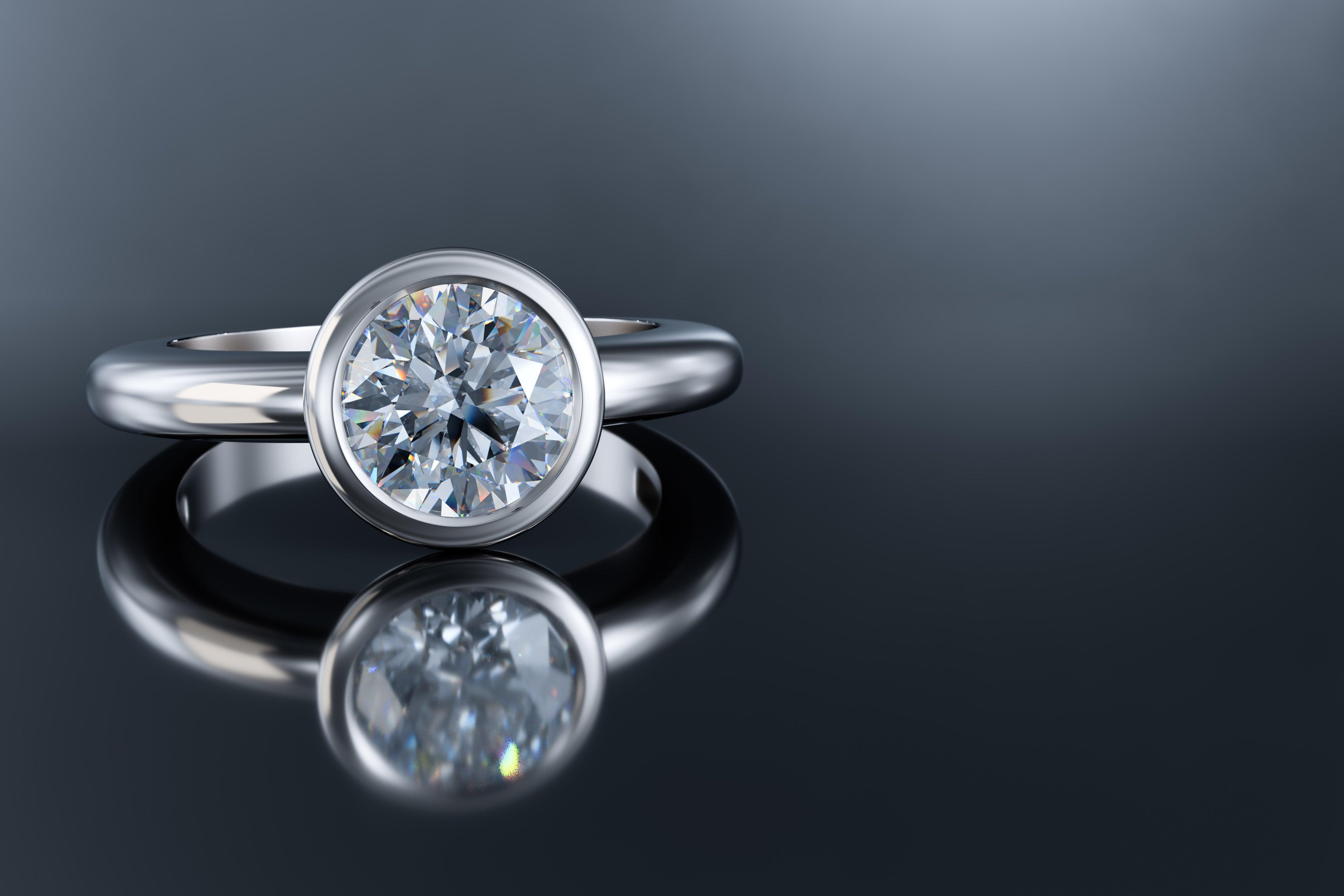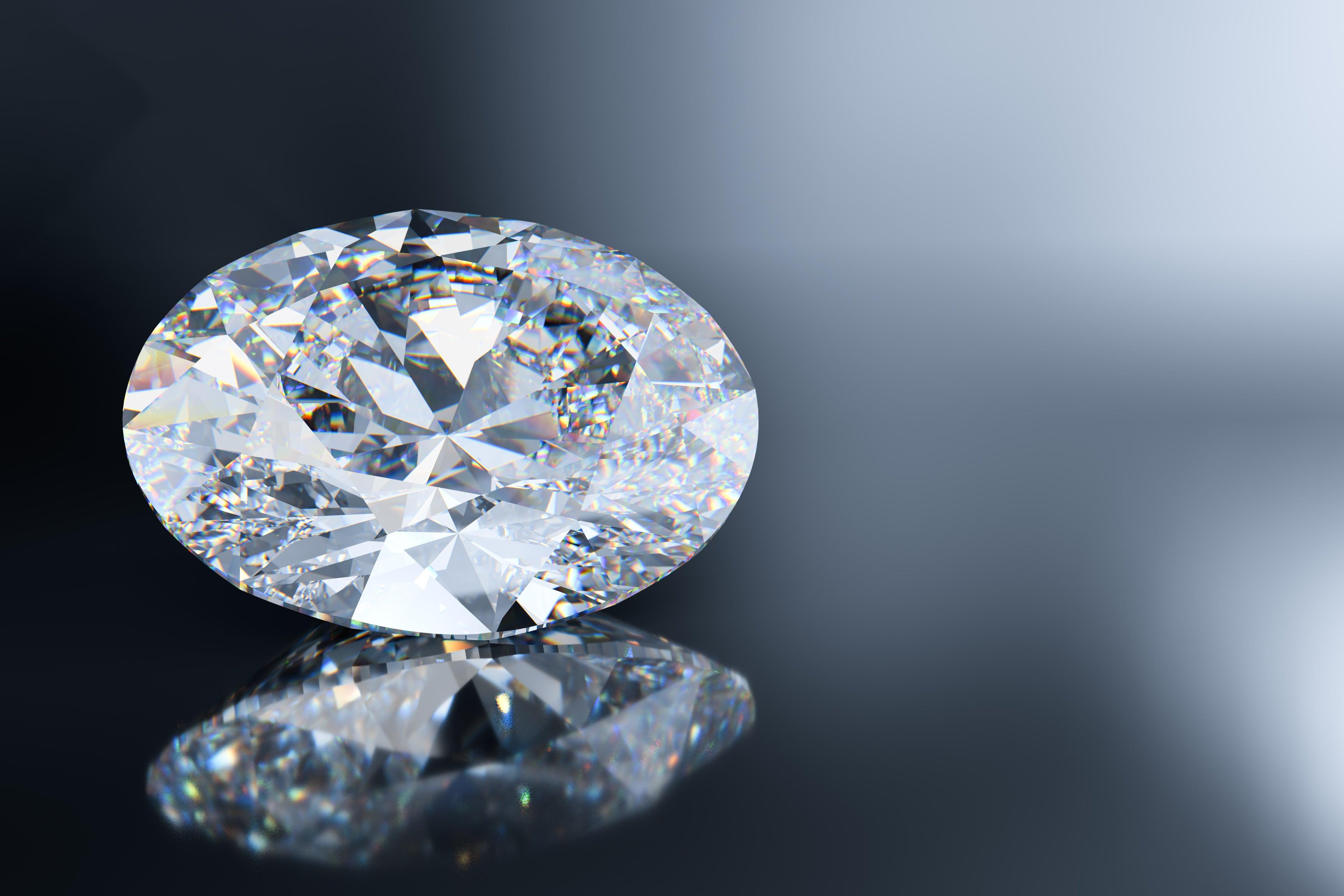
All about White Gold and Platinum
Interested in a silver, white gold, or platinum engagement ring? White metals have always been popular, but how do you know which one to choose? This Michael Gabriels blog will help you out.
Why Wear White Metals
White metals are extremely popular choices for jewelry today. Jewelry, such as women's engagement rings using platinum and white gold are ubiquitous, and men's wedding and engagement rings using those metals are steadily rising in popularity as well.
At Michael Gabriels we specialize in producing bespoke and customized pieces of jewelry. Some of our first questions (giving and receiving) are about metal choices, especially white metals. Some common questions that we get are:
- What is white gold?
- What is platinum?
- Is platinum better than gold?
- Why don’t we carry Silver rings?
The Color Silver vs the Metal Silver
Many people come in asking for silver rings. We understand that a lot of people are asking for silver as a color and not as a metal, and we at Michael Gabriels are happy to help anyone choose a white metal that most closely matches the silver color they have in their minds.
We do not, however, carry silver because we feel that white gold and platinum are more suited to most jewelry for most people.
Why wear white metals?
White metals don’t clash as much, so you can wear them with more clothing styles, cuts, colors, and patterns.
White metals go with pretty much any hair color. Whether you have very dark to platinum blonde, or change your hair color often, especially with vivid colors, white metals will be a perfect contrast or compliment to your look.
If you are setting diamonds in your jewelry, white gold and platinum complement your lab-grown diamond's radiance. White gold and platinum will provide excellent contrast for any colored stones- though this can be a danger with diamonds that are tinted, so if you are using a white metal your diamond needs to be a color grade (one of the 4 Cs) of at least J color or better.
What is White Gold?
White gold is an alloy (a mixture) of gold and a number of other metals, most of the time including silver, nickel, or zinc, copper, or even tin.
Why use White Gold for Engagement Rings?
The resulting alloy is stronger and more durable than yellow gold, and sometimes lighter (depending on the alloy mix), which may be a positive trait for some people. It is nearly identical to platinum making it a fantastic option for jewelry, especial diamond engagement rings.
It is also less expensive, so you can get a more affordable engagement ring with white gold than platinum.
At Michael Gabriels we offer two purities of white gold. 18 Karat white gold has more pure gold, making it slightly less durable and more expensive. However the larger gold content makes the ring shine brighter, and will be more likely hypoallergenic. 14 Karat, which has less pure gold, does need to be polished more often, but it is less expensive and looks almost identical. Moreover, it is much stronger and more durable, making it far more suitable for a very active lifestyle, or a very delicate ring.
In order to make your ring's brilliance last, at Michael Gabriels we plate our white gold engagement and wedding rings in Rhodium.
What’s its history and where does it come from?
You might be surprised to learn that white gold is a fairly recent invention, at least as a largely available commodity. While people have been mixing gold with other metals for centuries to make it easier to work with, the concept of trying to whiten it does not really begin to appear until platinum does.
You will remember from above that European love of platinum is a recent obsession, dating only back to the 18th century when advances in purification made it available to smiths. Well, it appears that some couldn’t get any. In Germany, two alchemists - yes, the kind of pseudo-scientists who looked for the sorcerer's stone and tried to make gold out of lead- named Johan Frierich Bottger and Ehrenfried Walther Von Tcshirnhaus produced some in Germany around 1710. Further attempts to imitate platinum, were tried, but no one really took an interest in whitening gold for many more hundreds of years.
Then our story gets interesting.
In the beginning a German chemist named Karl Richter, made a fusion of gold, nickel and palladium.
A second alloy was patented by the Belais brothers in the US in 1920 using gold, zinc and nickel. This got around the shortage of palladium due to WWI.
Over time challenges were brought against the Belias patent. It ended up in court in 1925. The judge ended up striking down the Belias patent, on the ground that he felt that mixing metals did not constitute an invention.
At this time white gold was gaining some popularity for its ability to imitate platinum, but recent booms in the platinum mining industry allowed for much greater availability.
That is, until WWII. Then, its durability and high melting point made it indispensable to the war effort on all sides, drying up the consumer market. White gold, which was identical to most people, boomed, and has never looked back.
Pros and Cons of White Gold Review
- Pros of White Gold
- Stronger and more durable than yellow gold, prone to less wear overtime due to the stronger metals in the alloy.
- More affordable than platinum
- Compliments white diamonds tremendously, some would say, better than yellow gold, though that is a subjective opinion.
- Very popular
- Has greater versatility in wearing than yellow gold
- Cons of White Gold
- Is subject to wear over time, and will require polishing eventually.
- If plated in rhodium, the plating will eventually wear and need to be replaced.
- Not always hypoallergenic, which will depend on the metals in the alloy.
What is Platinum?
Platinum is the first in a group of metals, quite unimaginatively named the “Platinum group” of metals. If it weren’t for the platinum group’s metal’s continued rise in popularity, we’d have the marketing team get on that re-branding campaign immediately.
These white metals are all extremely durable, and have high melting points. In addition, platinum jewelry is hypoallergenic.
Uses of Platinum
Because of its high melting point and durability, platinum, and the other metals in the platinum group, are regularly used for industrial applications, such as the catalytic converter in your car, computer chips and to line the crucibles used to melt softer metals such as gold.
Platinum is one of the most popular metals for women's engagement rings, diamond engagement rings, and diamond rings and jewelry in general. It is prized for its durability and color. You won’t have to polish it very often (every couple of years or so) or worry about it bending or breaking from impacts or falls. It will take more force and time for the surface to gain any scratches and is less susceptible to nicks, blemishes, and stains.
To extend the life of the brilliance of your ring, at Michael Gabriels we plate our platinum items in another platinum group metal, Rhodium.
What’s its history and where does it come from?
Platinum’s very earliest appearance in history comes from Egypt, but almost certainly as a contamination of the gold that Egyptians were working with, not deliberately. Platinum metals often appear mixed in with or alongside gold ore, or with copper and can be mistaken for gold, so it's most likely that it was discovered in this manner.
The first deliberate use of platinum appears in South America almost at the same time as the Egyptians were accidentally including it. The La Tolita culture in northern South America lived in a region rich in gold and platinum deposits, and by 200 BCE had already found a way to solder gold and platinum together, and produce platinum foil that could be used to cover gold in a pure white sheen. They were producing magnificent works of art and jewelry thousands of years before anyone else would figure out how to manipulate the now popular white metal.
Fast forward a few millennia to the first discovery of platinum by European explorers in the Americas. Spanish explorers were the first to come across platinum deposits in their gold mines in Central and South America, labeling it “Little Silver” or “Platina di pinto” and dismissing it of any value since it would not melt at the temperatures they could produce. In fact, records show that many a mine closed because there was too much platinum which the miners considered a nuisance and contaminant.
Spanish, French, and some other European scientists conducted experiments on the substance for about two hundred years before two chemists, Pierre Francois Chabaneau and Marc Etienne Janety, each independently were successful in finding a process by which platinum could be more easily processed into a pure and malleable material. Chabaneau, working for the king of Spain in secrecy, developed a method almost identical to the methods used by the La Tolita people almost two thousand years before. Janety developed a method using arsenic to purify the metal, which while successful, was extremely dangerous and toxic, so it's amazing he lived as long as he did. Platinum popularity skyrockets, with King Louis XVI of France declaring it the only metal for Kings, commissioning several pieces for the French Court, and inspiring so much zeal for the Spanish-controlled substance that the period is sometimes referred to as the “Platinum Age in Spain.” The French Revolution and Napoleanic conflicts put a full stop to Spanish and French experimentation with Platinum. The next chapter of the history of platinum would take place across the channel in merry old England.
Two scientists, William Hyde Wollaston and Smithson Tennant were the first to discover the platinum group of metals and viable processes for the large-scale production of platinum. Early on, because of its very high melting point, platinum was largely reserved to line the crucibles used to melt other metals and the flash/touch holes of guns.
During the 19th-century platinum deposits were discovered all around the world, including very large amounts of it in Russia and in South Africa. However, it wasn’t until the development of the oxyacetylene torch at the end of the 19th century that jewelers could start using the white, durable metal. The high temperatures that the torch could reach were beyond anything previously attained, allowing craftspeople and artisans, like the ones Michael Gabriels employs today, to produce fantastic platinum engagement rings, platinum diamond rings, and various other pieces.
During the pre-war period, platinum got another bump in popularity. Edwardian and Art Deco styles both emphasized the flashy brightness of white metals, and platinum’s durability won the praise and love of many a jeweler and wearer. In the post-war boom in the 50s and 60s, as the DeBeers “A diamond is forever,” campaign was permanently altering the western conception of what an engagement ring should be, platinum gained another tremendous boost since it pairs so well with the brilliance and radiance of a diamond.
Today platinum is still gaining in popularity. The 21st-century popularity of halos, pave and small stones for engagement rings and other jewelry, has increased the interest in platinum again, since its strength makes it optimal for those intricately detailed and minute settings that require many small pieces of metal to secure a great number of small diamonds.
Platinum today is mined all over the world, both in industrial mines, and artisanal claims. However, because of the environmental and social damage these indisutrial mines often cause, at Michael Gabriels all of our platinum jewelry is produced using recycled metal that more environmentally freindly.
Platinum Pros and Cons review
- Pros of Platinum
- Keeps its white color unlike white gold which has a tint.
- Stonger, heavier and more durable than white gold.
- Rare than gold, and often considered prestigious (platinum albums vs gold for example.)
- Hypoallergenic
- Cons of Platinum
- Can be significantly more expensive than white gold, which looks nearly identical.
- Will be susceptible to wear over time.
- Requires cleaning and polishing every few years, which will, like all metals, wear away some of the metal.
- If plated in rhodium, the plating will eventually wear and need to be replaced.
White gold and Platinum at Michael Gabriels
Has this answered your questions about white metals? If not, please reach out to us at Michael Gabriels and we will be happy to assist.
At Michael Gabriels we employ some of the best craftspeople and artisans right here in New York City, who are well acquainted with platinum and white gold and love working with both. We are happy to help you find the white metal that suits you best and produce the bespoke or customized engagement or wedding ring, or other jewelery of your dreams. All our diamonds are sustainable, lab-grown diamonds that look fabulous with white gold, or platinum, and we will be happy to help you find the stone that sings to you most.



